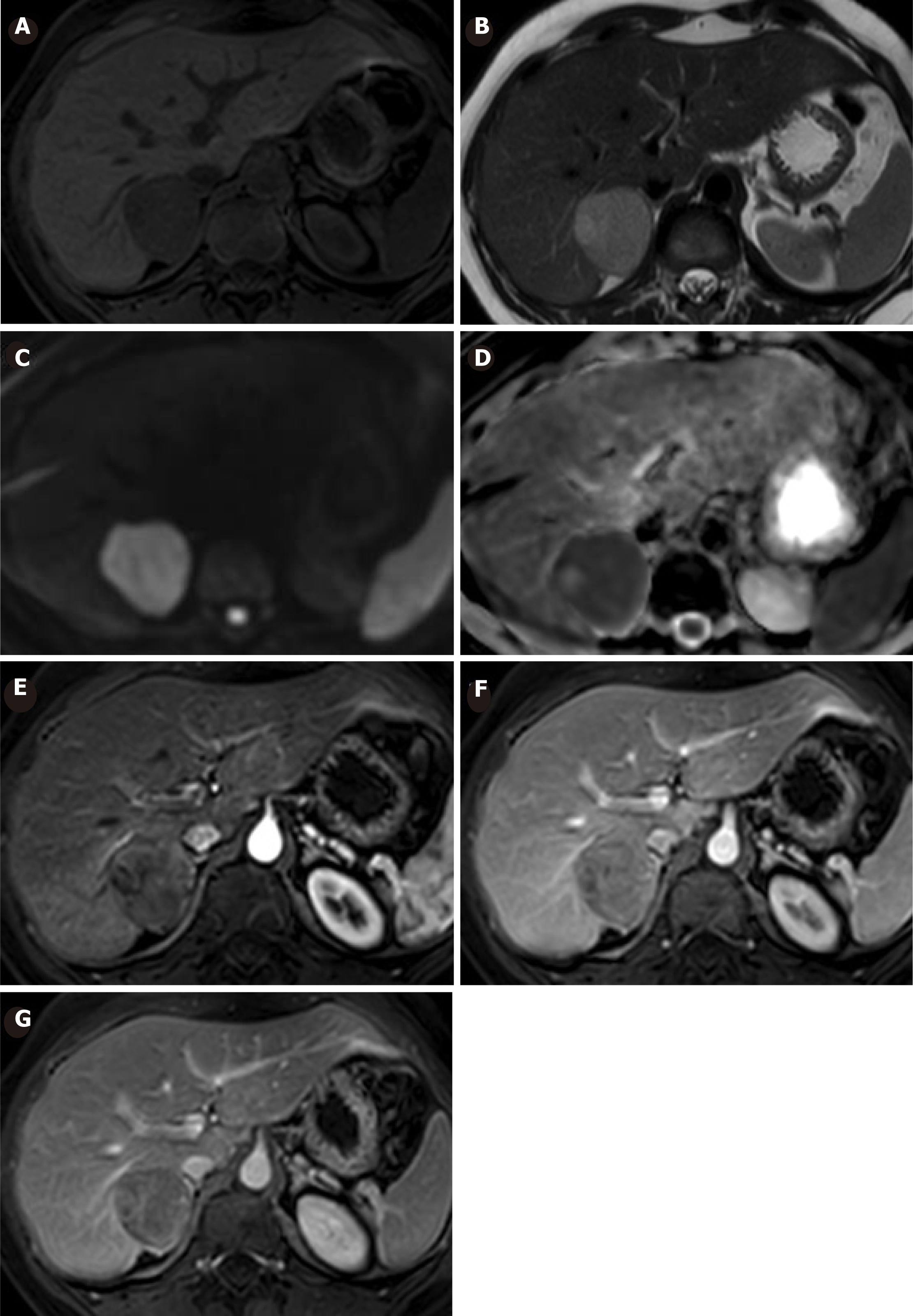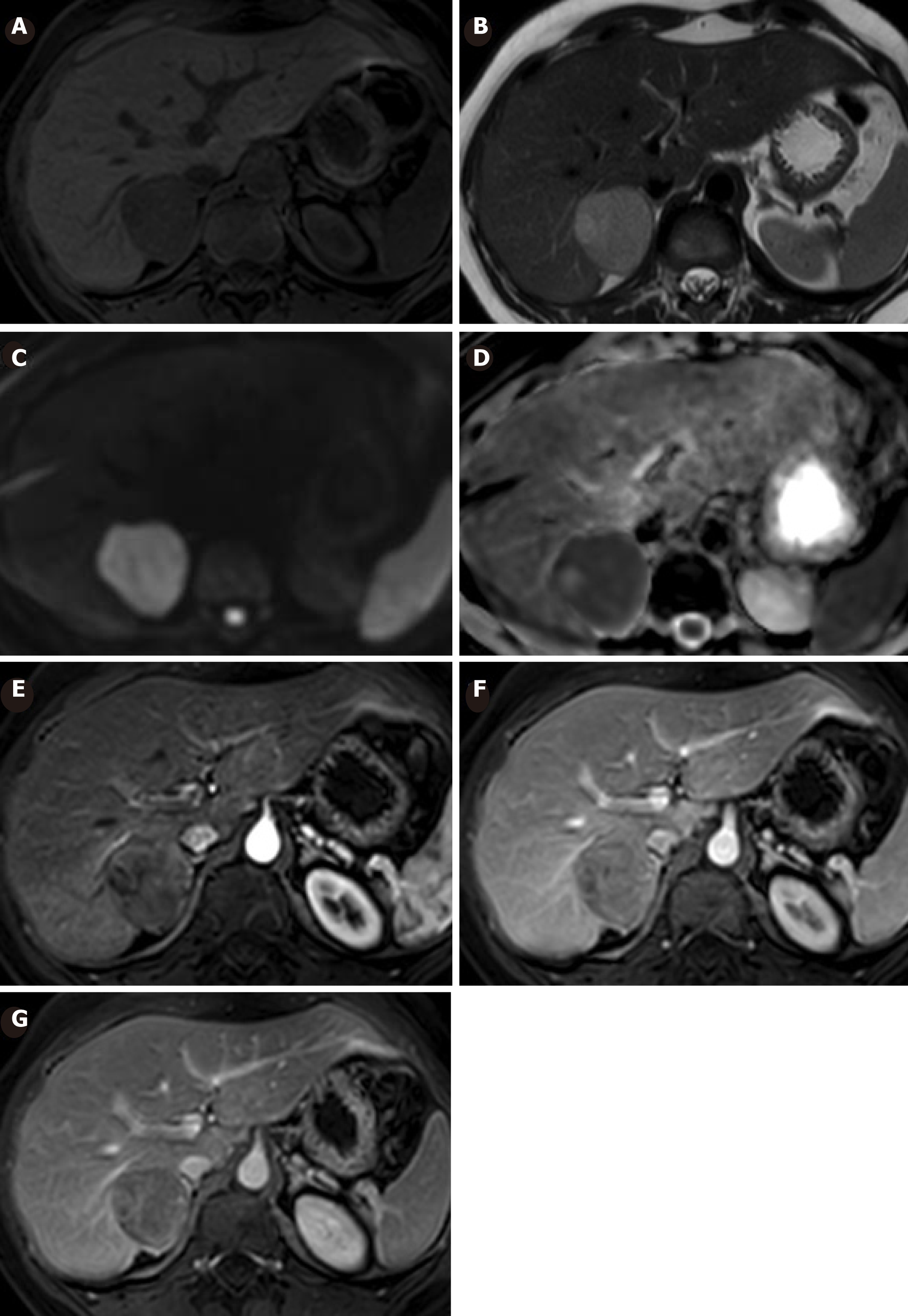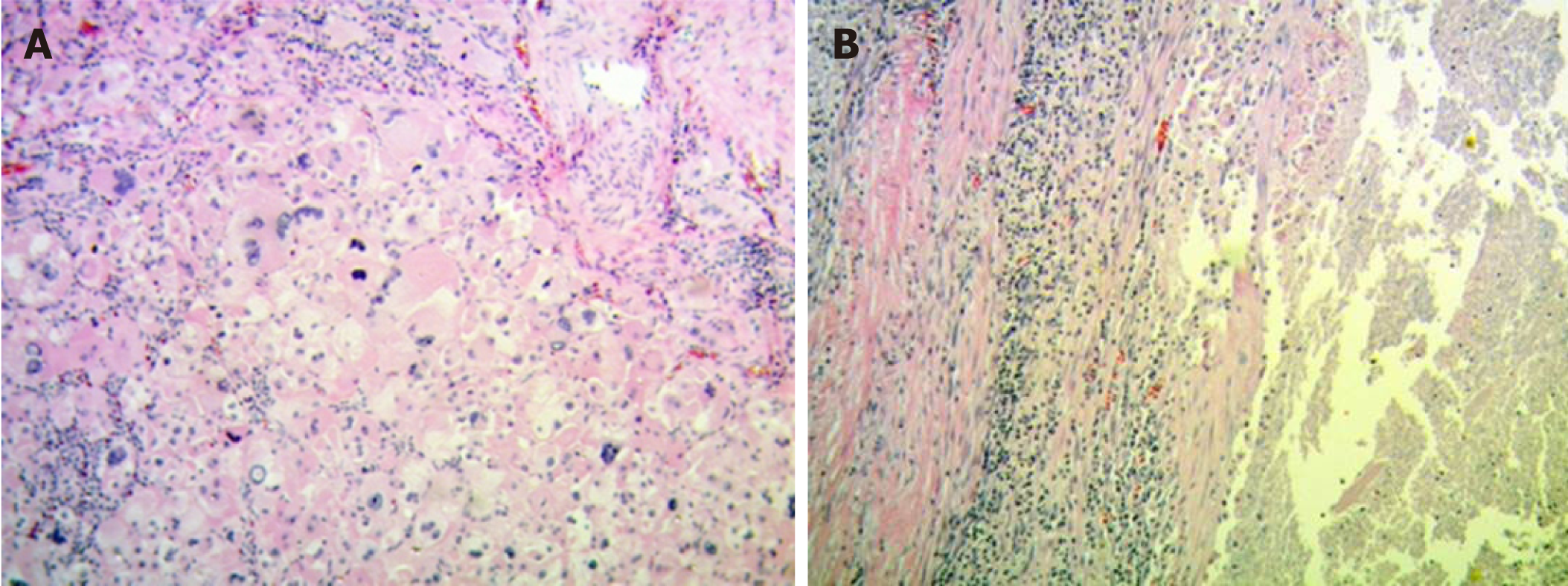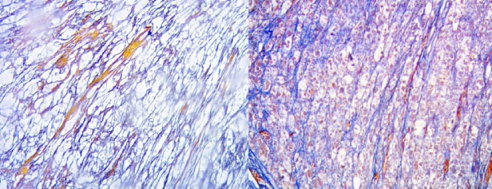Copyright
©The Author(s) 2019.
World J Gastrointestinal Surgery. Apr 27, 2019; 11(4): 229-236
Published online Apr 27, 2019. doi: 10.4240/wjgs.v11.i4.229
Published online Apr 27, 2019. doi: 10.4240/wjgs.v11.i4.229
Figure 1 Magnetic resonance imaging is showing a focal image with well-defined limits in segment VII of the liver, in contact with the inferior vena cava.
A: It is slightly hypertensive in T2 with a central zone of a higher signal; B: Is hyperintense in diffusion-weighted image b800; C: Is iso-hyperintense in ADC; D: It is iso-hypointense in phase sequence; E: Has a signal drop in the out-of-phase sequence; F: After administration of the EV contrast, it does not enhance in the arterial phase; G: Is hypointense in the portal phase; H: Shows an apparent central scar in the late phase. These findings are compatible with hepatocellular adenoma or Focal Nodular Hyperplasia of atypical behavior.
Figure 2 Magnetic resonance imaging is showing a decreased size of the lesion in follow-up.
A: Is hypointense in T2 with an edge of greater signal; B: Is iso-hyperintense in T1; C: It does not show definite evidence of enhancement after administration of the EV contrast in C: Arterial; D: Portal; E: Late phase. These findings could be related to a hepatocellular adenoma with intralesional hemorrhagic changes.
Figure 3 Magnetic resonance imaging showing enlargement of the lesion in follow-up.
A: It is hypointense in T1; B: Hyperintense in T2; C: Hyperintense in diffusion-weighted image (DWI) b800. D: It shows restriction in ADC; E: Has slight heterogeneous enhancement in arterial phase; F: Has more evident enhancement in portal phase; G: Also more enhancement in late phase. The increase in size and the presence of restriction in DWI is suggestive of malignant transformation.
Figure 4 Hematoxilin and eosin.
A: With 400×, tumor area with atypia and abundant mitotic figures can be noticed; B: With 100×, sector with extensive necrosis and the presence of a tumor capsule can be seen.
Figure 5 Masson trichrome and Reticulin staining in 400×.
Trabecular organization of the tumor and para-trabecular fibrosis can be observed.
- Citation: Glinka J, Clariá RS, Fratanoni E, Spina J, Mullen E, Ardiles V, Mazza O, Pekolj J, de Santibañes M, de Santibañes E. Malignant transformation of hepatocellular adenoma in a young female patient after ovulation induction fertility treatment: A case report. World J Gastrointestinal Surgery 2019; 11(4): 229-236
- URL: https://www.wjgnet.com/1948-9366/full/v11/i4/229.htm
- DOI: https://dx.doi.org/10.4240/wjgs.v11.i4.229













